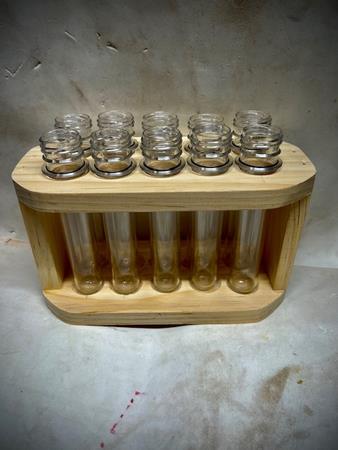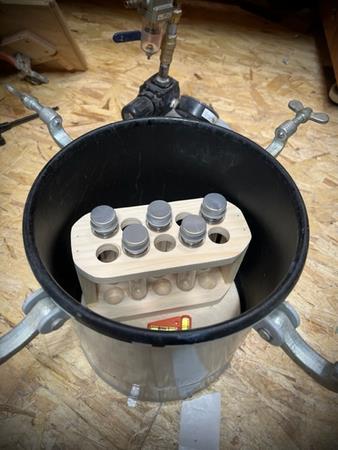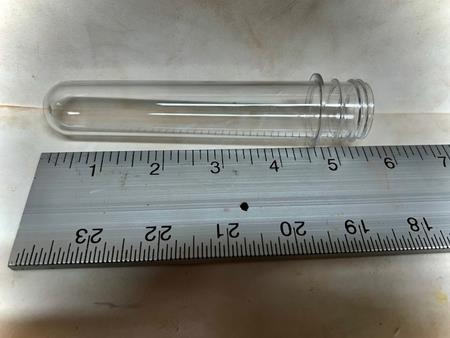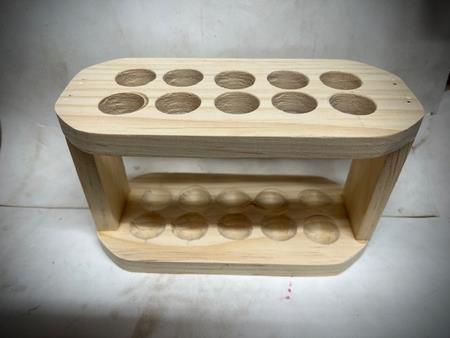I have been casting Alumilite Clear Slow resin blanks in a rectangular block mold I made from HDPE plastic for a while. The block mold allows me to get 3 to 4 pen blanks out of each poured casting, which is pretty decent. However, the resin is getting really expensive lately and I've been trying to think of ways to reduce the volume of resin I need with each casting to control my costs. Since the block pours come out square, I waste a lot of the material (and time) making the blank round and to the right length.
One method I read about was vertical casting using different items for the vertical mold. One method described using PVC pipe with a cap on one end as a mold. Some reports said this was very successful and others only stated reasonable success. Another method I read about was using centrifuge test tubes as the molds, as they are super smooth inside and reusable plastic. I found 50 ml tubes with a length of about 5.5" and a diameter of .85 inches which seemed perfect. Cost was super cheap - 50 tubes for about $15 delivered to my door. Waste is minimal, because the tubes are close to the 3/4" diameters I typically use for pens and the length allows me to get a full pen blank out of it for most pen sizes. However, have you ever tried to keep a tube perfectly vertical, so nothing spills out? Forget about it.
My answer was a tube rack for my pressure pot. Racks on Amazon are a lot of different costs, but I needed something that was a somewhat high density that also fit in the tight space inside the pressure pot. Off to my scrap pile!
I put together a wood rack from 1x6x 3/4 pine that holds 10 tubes and fits into my pressure pot perfectly. I could have changed the shape slightly and even increased the tube density to close to double, but I don't pour that many pieces at once (yet!).
It took no time to construct and it works! Pics are below if you need something similar - just figure the dimensions to fit your tubes diameter and height and you are good to go!
To build it, I cut the pine down to a length to fit my pot. I then drilled 10 holes in the top that were slightly larger than my tubes. I drilled them with a Forstner bit with a pilot point which allowed my to index into the bottom panel. I then used a round router bit to bore out curved dimples in the bottom panel that matched the upper panel holes perfectly. A little glue and air nails were used to connect two vertical riser pieces to attach the bottom and top panels together. A quick run on my belt sander to smooth down everything was done before assembly and then again to do the rounding on the corners to help the whole assembly fit better in the pot. Basic 'jig' construction - nothing fancy or hard to do.




From my calculations, the square block mold used about 300 ml's of resin and I got 4 blanks out of it. With the vertical rack, each tube pour is about 50ml's, so 4 pours would be 200 ml's or a savings of 100ml's of resin with each casting, or roughly a 25% savings of materials! Not bad!
The tubes are reusable, as is the rack, so my fixed costs should only be my resin cost. All in all a good return on another fun project!
Kevin